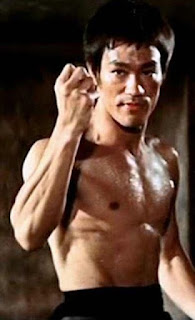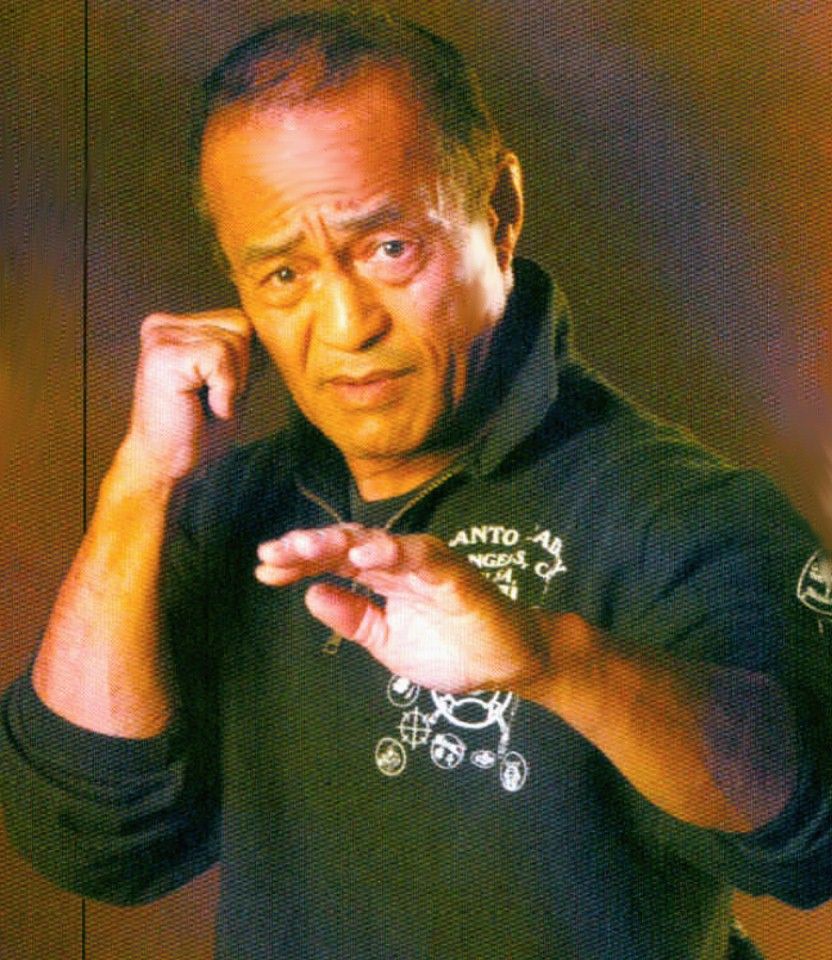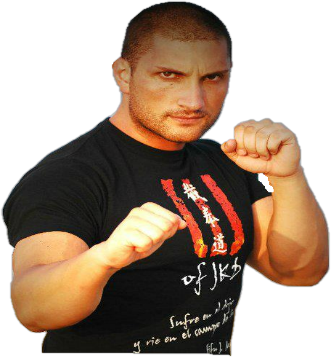Nitoryu or Kenjutsu is the umbrella term for all (koryū) schools of Japanese swordsmanship, in particular those that predate the Meiji Restoration. The modern styles of kendo and iaido that were established in the 20th century included modern form of kenjutsu in their curriculum too.
Kenjutsu, which originated with the samurai class of feudal Japan, means "the method, or technique, of the sword." This is opposed to kendo, which means "the way of the sword". The exact activities and conventions undertaken when practicing kenjutsu vary from school to school, where the word school here refers to the practice, methods, ethics, and metaphysics of a given tradition, yet commonly include practice of battlefield techniques without an opponent and techniques whereby two practitioners perform kata (featuring full contact strikes to the body in some styles and no body contact strikes permitted in others).
Publication Information
- Martial Arts : Nitoryu
- Japanese : 二刀流モ
- Type : umbrella term for all koryu schools
- Focus : Weaponry / Japanese Sword
- Country of origin : Japan
- User : Japanese swordsmanship
- User In TV Series (Fiction) : Kamen Rider Ghost
Historically, schools incorporated sparring under a variety of conditions, from using solid wooden bokutō to use of bamboo sword (shinai) and armor (bōgu):XII, XIII In modern times sparring in Japanese martial art is more strongly associated with kendo.
History
Early development
It is thought likely that the first iron swords were manufactured in Japan in the fourth century, based on technology imported from China via the Korean peninsula. :1 While swords clearly played an important cultural and religious role in ancient Japan, :5, 14 in the Heian period the globally recognised curved Japanese sword was developed and swords became important weapons and symbolic items :15 The oldest schools in existence today arose in the Muromachi period (1336 to 1573), known for long periods of inter-state warfare. Three major schools emerged during this period.
- Kage-ryū (Aizu) (Aisukage ryū)
- Chujo-ryū
- Tenshin Shōden Katori Shintō-ryū
These schools form the ancestors for many descendent styles, for example, from Ittō ryū has branched Ono-ha Ittō ryū and Mizoguchi-ha Ittō-ryū (among many others). On the island of Okinawa, the art of Udundi includes a unique method of both Kenjutsu and Iaijutsu. This is the only surviving sword system from Okinawa. It was the martial art of the noble Motobu family during the Ryukyu Kingdom.
Edo period
During the Edo period schools proliferated to number more than 500,:XIII and training techniques and equipment advanced. The 19th century led to the development of the bamboo practice sword, the shinai, and protective armor, bogu. This allowed practice of full speed techniques in sparring, while reducing risk of serious harm to the practitioner. Before this, training in Kenjutsu had consisted mainly of basic technique practice and paired kata, using solid wooden practice swords (bokutō) or live blades.:XIII
Decline
Beginning in 1868, the Meiji Restoration led to the breakup of the military class and the modernization of Japan along the lines of western industrial nations. As the samurai class was officially dissolved at this time, kenjutsu fell into decline, an unpopular reminder of the past.:XIII, XIV This decline continued for approximately 20 years, until rising national confidence led to an increase of the uptake of traditional sword arts again, particularly in the military and the police.
In 1886 the Japanese Police gathered together kata from a variety of kenjutsu schools into a standardised set for training purposes.:11 This process of standardization of martial training continued when, in 1895, a body for martial arts in Japan, the Dai Nippon Butoku Kai, was established. Work on standardizing kenjutsu kata continued for years, with several groups involved:11,12 until in 1912 an edict was released by the Dai Nippon Butoku Kai.
This edict highlighted a lack of unity in teaching and introduced a standard core teaching curriculum to which the individual kenjutsu schools would add their distinctive techniques. This core curriculum, and its ten kata evolved into the modern martial art of kendo.:11,14 This point could be regarded as the end of the development of Kendo Kata was provided for the unification of many schools to enable them to pass on the techniques and spirit of the Japanese sword.
20th and 21st century
With the increasing interest in Japanese martial arts outside Japan during the 20th century, people in other countries started taking an interest in kenjutsu. Many martial artists who study Japanese martial arts know the principles of kenjutsu. For modern kenjutsu type training, most practice is done in suburi style with bokken.
Weapons
One of the more common training weapons is the wooden sword (bokuto or bokken). For various reasons, many schools make use of very specifically designed bokuto, altering its shape, weight and length according to the style's specifications. For example, bokuto used within Yagyū Shinkage-ryū are relatively thin and without a handguard in order to match the school's characteristic approach to combat. Alternatively, Kashima Shin-ryū practitioners use a thicker than average bokuto with no curvature and with a rather large hilt.
This of course lends itself well to Kashima Shin-ryū's distinct principles of combat. Some schools practice with fukuro shinai (a bamboo sword covered with leather or cloth) under circumstances where the student lacks the ability to safely control a bokuto at full speed or as a general safety precaution. In fact, the fukuro shinai dates as far back as the 15th century.
Techniques and styles
Nitōjutsu
A distinguishing feature of many kenjutsu syllabi is the use of a paired katana or daitō and wakizashi or shōtō commonly referred to as nitōjutsu (two sword methods). Styles that teach it are called nitōryū (two sword school?); contrast ittō-ryū (one sword school). The most famous exponent of nitōjutsu was Miyamoto Musashi (1584 – 1645), the founder of Hyōhō Niten Ichi-ryū, who advocates it in The Book of Five Rings. Nitōjutsu is not however unique to Hyoho Niten Ichi-ryū, nor was nitōjutsu the creation of Musashi. Both Tenshin Shōden Katori Shinto-ryū were founded in the early Muromachi period (ca. 1447), and Tatsumi-ryu founded Eishō period (1504–1521), contain extensive nitōjutsu curricula while also preceding the establishment of Musashi’s Hyoho Niten Ichi-ryū.
Techniques
Kenjutsu techniques can be compared to the strategies of warfare, while batto-jutsu or kendo can be compared to shooting range techniques. As in the Book of Five Rings, by Miyamoto Musashi, a kenjutsuka (a practitioner of kenjutsu) relies on the conditions of the ground, light source, as well as the opponents' capabilities, before implementing a practical attack. The attack is not set on any particular weapon or move to capitulate, nor is there a predisposed target or trajectory. Any exposed part of the opponents body is a possible target (as in Musashi's "Injuring the Corners"). The most basic cutting technique, used in kendo and, particularly, in Eishin-ryū is kesagake or kesagiri. It is a downward diagonal cut, once used to cut the enemy from shoulder (collar bone) to waist (hip-bone). Opening the front rib-cage.
To be effective, a kenjutsu strike/or counter-strike is a composition of several techniques: feigning, cutting, jabbing, thrusting, parrying or binding, footwork, choice of weapon, and even knowing the opponents weapon. It was mentioned that once Musashi realized the physics of the chain-and-sickle (kusarigama) , he was then able to defeat it. The feigning techniques are effective movements of the weapon, footwork, center of gravity, and even the use of kiai. Applied effectively, the opponent is set-back one move, while creating an opening elsewhere. The feigning technique should be angled to allow a quick direct shot from this position.
Only sufficient practice will perfect these techniques and teaching to convey the training of proper reflexes. There is not much time to think during a skirmish or battle. A fluent continuation of techniques must be deployed to manage even multiple opponents. One second per opponent is too long. Managing an army should be treated the same way. A practical understanding of the body, weapon and timing is necessary to be able to dispatch a strike or counter strike whether standing, walking, or rolling around the ground (or whether an army is attacking or retreating). There is no time-out or ready position. It might be a fight under minimum visibility or total darkness. When striking range is reached, reflexes dictate the outcome.
Cutting, jabbing, and thrusting techniques must be all preceded by a feint (except when using the quick strike techniques). The defender can easily parry a strong attack, due to the telegraphing momentum behind the attacker's weapon. Therefore, a strong cutting technique can easily receive a deadly cut across the sword hand or forearm. The feigning movement should complement both double-sword, two-handed sword, or any weapon.
There are some strikes that do not require a preceding subterfuge. These are referred to as "quick strikes". They are done with two hands on the sword or with a sword in each hand. One hand is at the base of the tsuka (to provide longer reach) and the other hand is at the ridge of the blade to provide the initial force to flick the sword as quick as an arrow to hit the target. This could be done with the double sword, with one sword providing the push for the dispatch. These postures are hidden and the ready positions are implemented while switching hands or while changing steps. These flicking strikes can be administered from any angle (top, sides or below).
When parrying, always try to direct the point of the sword to the target. This minimizes the step needed to be able to counter-attack. Thus the opponent is at an immediate disadvantage. Also, using the quick strike at the opponent's sword hand or forearm will immediately incapacitate his attack before having to parry it. A simple rule — to keep the point of the sword pointed to the opponent or at within the area of the gate, while attempting to parry in all angles — will provide a good foundation for appropriate counter-maneuver reflexes.
Musashi said that the footwork shall be adapted to terrain and purpose. The correct stride is to be applied to whatever leverage is needed to effectively wield the weapon at hand. The choice of weapon and knowing the opponents' weapons is essential for the choice of right technique and strategy. Knowing the center of gravity of a weapon can help the assessment of its maneuverability and speed, as much as its effects on leverage and kinetic forces.
The use of the double-sword (one in each hand) can provide the ultimate control of the gate. The "gate", as referred to by Miyamoto Musashi, is the opening between two fighters. All attacks must go through this gate to reach the target from any angle. To close or disrupt the gate at the right moment is necessary to deflect incoming attacks. The double swords' ability to alternate and complement their trajectories provides a strong continuous flowing barricade as well as trapping and striking repetitions. Timing is essential in the use of this technique, and Musashi advised that the double-sword technique should be learned early on.
In the later stages of kenjutsu, one can win without the use of a blade by merely understanding the physics of sword work. A kenjutsuka can resolve or win without having to fight (or without having to cut) — and gain followers instead. There is no individual or religion that started this. Any level-headed person would not want to maim or kill another human being. A kenjutsuka (a true swordsman) strives to attain well beyond cutting techniques: to serve his master or act on his own as a diplomat of fairness in the living hell:
Notable kensei
- Chiba Shusaku Narimasa Founder of the Hokushin Itto-ryu
- Iizasa Choisai Ienao
- Ito Ittosai Kagehisa
- Miyamoto Musashi
- Negishi Shingoro The last headmaster from the Shindo Munen-ryu in the edo period.
- Okita Souji
- Sasaki Kojiro
- Takeda Shingen
- Yagyu Munenori
- Yamaoka Tesshu
User In TV Series (Fiction)
Related Post :
Source :
wikipedia / kamenrider.wikia









.jpg)


















